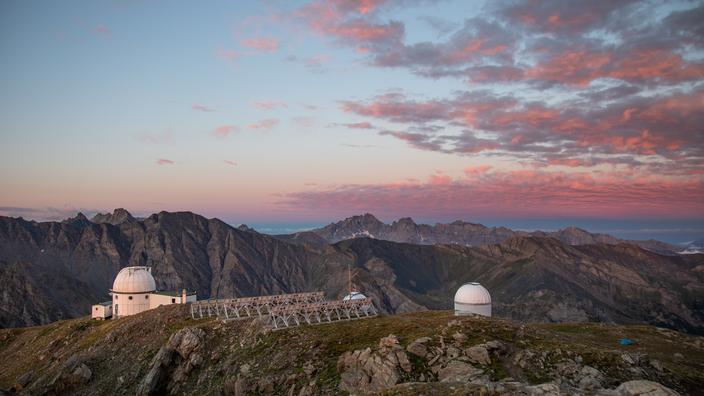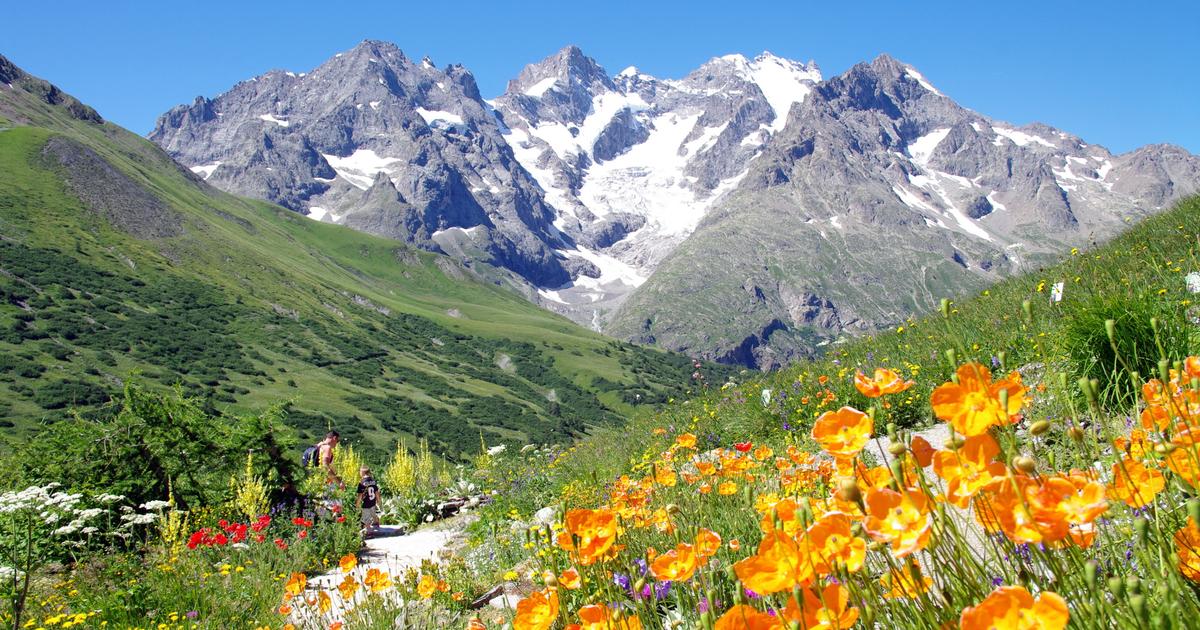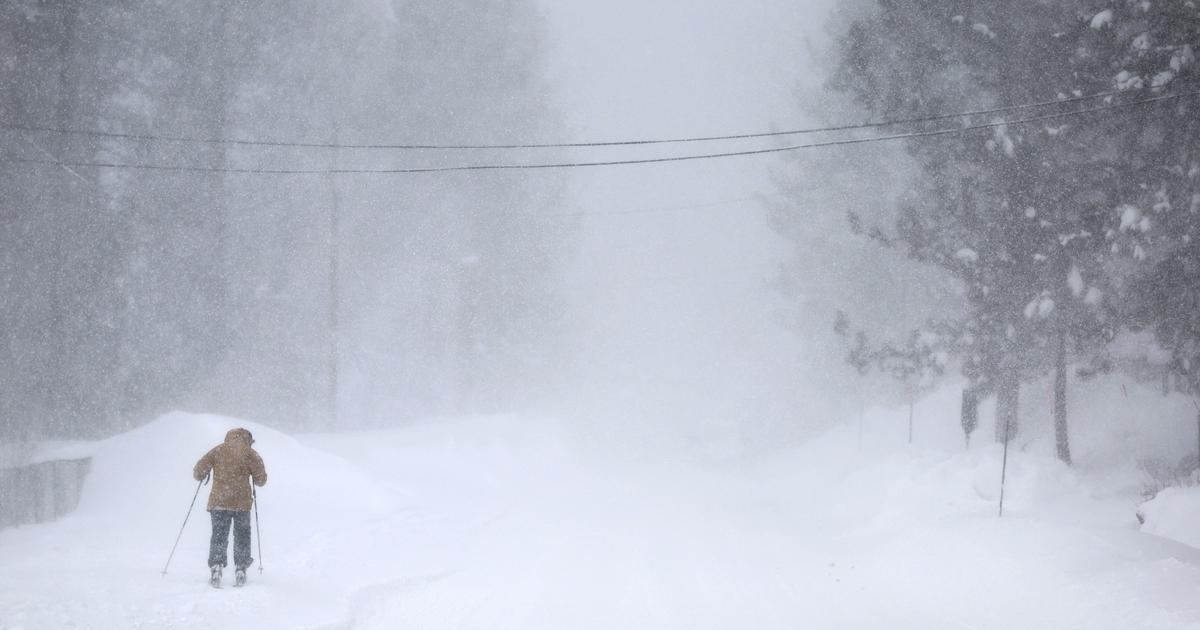On the edge of the French Alps, at an altitude of nearly 3000 meters, is an unexpected place: the highest observatory in Europe, under the Pic de Château-Renard.
Formerly in the running to host the second largest telescope in the world, this observatory located in the heart of Queyras now receives the general public for stargazing nights.
Dry air, low turbulence, clear nights and of course altitude make the place particularly conducive to the contemplation of planets and celestial objects.
"It is a site outside the world and out of time"
summarizes Raphaël Bacher, scientific mediator up there.
Story of a night between heaven and earth.
Read also Queyras: the best kept secret of the Hautes-Alpes
The different hikes to the Saint-Véran observatory
This 900-meter ascent will require 2h30 to 5 hours of walking, depending on the Aymeric Guittet routes.
As the climb to the observatory is
“part of the experience”
according to the supervisory team, no motorized means will take you to the Pic de Château Renard.
You have to rely on your own legs and not underestimate this ascent of 900 meters of vertical drop, which will require 2h30 to 5 hours of walking, depending on the routes.
The reward is at the end, with an arrival in the evening light, a sublime panorama and a snack offered by the team (hot tea, coffee, various juices, cakes ...).
Three routes allow you to climb:
From the Sainte-Elisabeth chapel
The most obvious path follows the 4x4 track for about ten kilometers from a crossroads near the Sainte-Elisabeth chapel, reached by the shuttle leaving from Saint-Véran.
If this hike is neither the wildest nor the most direct, it allows you to climb gradually.
Departure:
at 2230 meters, before the Sainte Elisabeth chapel, a track rises towards the observatory (this departure is reached on foot by road, or thanks to the shuttle leaving from St Véran).
Arrival:
at 2931 meters, at the Saint-Véran observatory.
700 meters
of elevation gain.
Medium level:
fairly long route but technically very easy.
Duration
: 3h30 to 5 hours depending on the level.
Leave around 1 p.m.
From the village of Saint-Véran
The second route starts from the village of Saint-Véran itself.
It follows quite steeply the Cassettes chairlift, before reaching the arrival of the Grand Serre ski lift.
There, a narrow path follows the ridges in a mineral setting.
The difference in height being crossed quickly, the most trained reach the observatory in 2h30.
Departure:
at 2040 meters, from the village of Saint-Véran.
Arrival:
at 2931 meters, at the Saint-Véran observatory.
900 meters
of elevation gain.
Difficult level:
steep route, a few points where you need to orient yourself.
Duration
: 2h30 to 3h30.
Leave around 2 p.m.
"Grand Canal" itinerary
The last possibility is to follow the “Grand Canal” route, from Saint-Véran.
At point 2268, you can choose to continue on this path to join the 4x4 track, or cut off the path through the mountain pastures towards the observatory, which requires experience and an IGN map.
Departure
: at 2040 meters, from the village of Saint-Véran.
Arrival
: at 2931 meters, at the Saint-Véran observatory.
900 meters
of elevation gain.
Medium-difficult level
: easy path at the beginning, then more sustained climb, with need to orientate yourself.
Duration:
3 to 4 hours.
Leave around 1 p.m.
SEE THE FILE -
Hiking: the Figaro guide
Evening and night at the observatory, between planets and celestial objects
In the dome, in the dead of night, the telescope is directed towards the stars, planets and celestial objects.
Aymeric Guittet
As soon as all of the eight apprentice astronomers have arrived, a tour of the facilities begins, and in particular of its three domes.
Light capture, focal length, scientific research: everyone stores their first knowledge of how telescopes work.
Shortly before the evening meal, the team sets up a special telescope on the terrace.
Dividing the sunlight by 100,000, it allows you to look directly at our star, which appears in red on a black background.
Spots and solar flares then reveal themselves.
The dinner (which is brought by the participants, the team being made up of volunteer scientists only) is a moment of meeting between mediators and participants from all walks of life:
“we welcome families with children, retired couples, but also young people. "
, reveals Raphaël Bacher. When the meal is over, the sky is still too bright to look at the space. Those who are not afraid of falling asleep too deeply go to rest for an hour. Everyone should be ready by 11pm, or a little later if the sky is not clear enough. You should dress warmly: even in summer, the temperature fluctuates between -5 and + 5 ° C at this altitude. In the silence of the night, the novices enter the dome under a red light, because any other color would dazzle the eyes for about fifteen minutes.
Sitting in a circle around the telescope, the participants listen to Raphael's passionate explanations. The dome opens, a fringe of sky appears. The telescope is positioned. Jupiter and Saturn are targeted first. Each in turn places their eye in the telescope for about ten seconds of observation. Orbiting hundreds of millions of kilometers from us, these planets in our solar system appear so vividly that one might think they are drawn on the telescope lens. Their only colors are shades of gray: there is not enough light for our eyes to distinguish the red and orange tones of Jupiter and the beige of Saturn.
In the dark, you must then grab a handle and slide the dome to discover other parts of the space.
Messier 27, a planetary nebula resulting from the explosion of a star and resembling an apple core, Alcor and Mazar, a double star, or the Amas of Hercules, a globular cluster.
Less impressive, these discoveries show the diversity of celestial objects in our universe.
From 2 a.m., participants will gradually go to bed.
Because if the supervisors work at a staggered pace and can last up to 4 hours, the neo-astronomers suffer the brunt of the cold and fatigue.
Sunrise over Italy, at the top of the Pic
Around the station made of wood and framed by two white domes, the lunar landscape offers to the gaze an arid land and a few rocks.
ALIENOR VINCOTTE / Le Figaro
The night spent at the observatory is short.
Neophytes go to bed between 2 and 4 a.m., to wake up around 6 a.m., 15 minutes before sunrise.
The morning cold and physical exercise invigorate, by the time you reach the summit of the Pic de Château-Renard, located a 15-minute walk from the observatory.
Very close to the symbolic altitude of 3000 meters, we contemplate the sun rising on the Italian side, near Monte Viso.
An orange light soon colors the summits to the west, from the Mercantour to the Ecrins.
Back at the base, a breakfast that has nothing to envy to that of hotels (tea, coffee, milk, cereals, bread, jam, cakes, fruits ...) is served, followed by a moment of discussion with supervisors.
Those who wish can then go back to bed for up to 10 a.m.
As for those in a hurry, they can begin the return to Saint-Véran, under the powerful light of our star.
Practical notebook
RESERVE
Places for the "Discovery of the Sky" nights are full from the first half of January for the following summer: you should therefore not delay to book (from September 30, 2021).
It is also possible to come in winter, from Christmas to the end of March, provided you are at least six and be able to go up on cross-country skis or snowshoes.
Count 95 € per night in winter and 92 € in summer per person, with breakfast and snack included (plan your dinner).
EQUIPMENT
Provide the same equipment (down jacket, tights, gloves, hats) as in winter.
Even in the middle of summer, temperatures are often negative at the observatory.
GO
To reach Saint-Véran by car, count 4h30 from Lyon, 9 to 10 hours from Paris and 4:15 from Nice.
Allow around 8 hours by train between Paris and Saint-Véran.
The Paris-Briançon night train is scheduled to resume on December 12.









